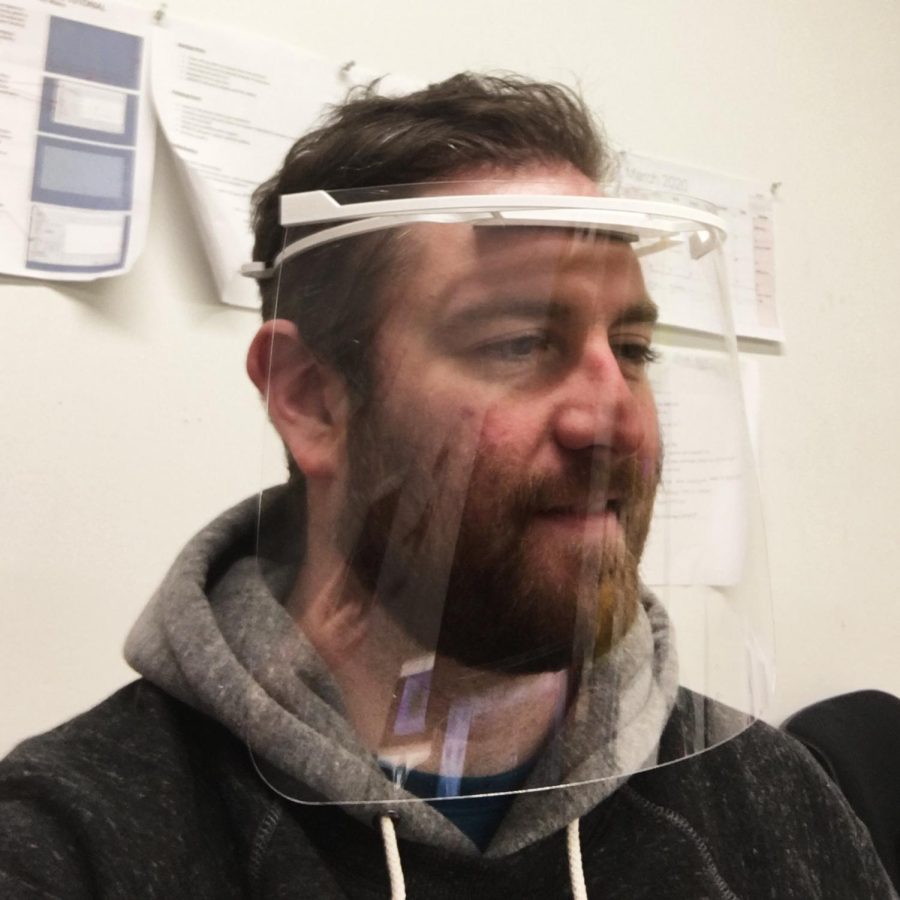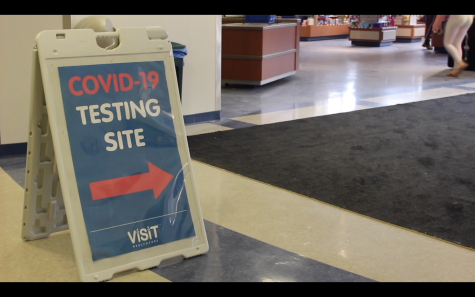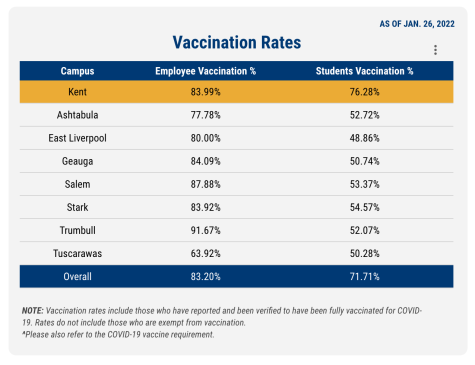Kent State faculty aim to help first responders in light of personal protective equipment shortage
April 3, 2020
When nurse Tracy Dodson interacts with a patient experiencing respiratory issues, she wears goggles, gloves, a mask and a gown. She usually puts the equipment in a trash bin when she leaves the room. But recently, protocol has changed.
“It’s gotten to the point where now like, OK, you’re going to wear the same goggles all day, you’re going to clean them with alcohol and you’re going to put them in a plastic bag. When you’re not using it, you’re going to reuse that same mask all day,” Dodson said.
The coronavirus pandemic has created a shortage of personal protective equipment [PPE] in hospitals and medical centers worldwide. As the number of confirmed cases continues to surge, health care workers need PPE to keep themselves safe. Many members of Kent State’s faculty and staff wanted to see if they could assist the health care industry during this crisis by using 3D printers to create PPE.
“I became aware of a few different groups that were at least considering the idea of activating the 3D printers to think about how to respond to the creation of face shields or the masks,” said J.R. Campbell, executive director of the Design Innovation Initiative, who has helped lead the effort. “And I started reaching out to everybody that I had heard was involved and started to basically turn that into a group.”
The team consists of more than 25 people from a variety of disciplines, including the Research Center for Educational Technology, the College of Architecture and Environmental Design, the College of Public Health and University Libraries, Campbell said. The group works virtually through Microsoft Teams, he said.
The team started with face shield and mask designs produced by other universities, said Hilary Kennedy, manager of the library makerspaces. Kennedy brought home a 3D printer from the Student Multimedia Studio that she uses to test different designs. Kennedy said the team made changes to these designs in an effort to increase the speed at which the masks and shields can be created, as well as other factors.
“We had one of our designers make some modifications and kind of merge a couple of different designs that we found out there to make a design that we felt maybe would work best,” Kennedy said.
In addition, Kennedy said the group has been focused on sourcing materials to manufacture PPE. Because of the nationwide shortage, it has been difficult to obtain large quantities of the necessary materials, she said.
Once the team finalizes a design, the next step is to begin using 3D printers on campus to manufacture PPE. Campbell said the group works with Chris Woolverton, professor of environmental health sciences, to develop a safety protocol “for how we would have a small team of people, pretty much one at a time, come in and run the 3D printers to try to produce the shields.”
The group plans to donate the PPE it creates to first responders in Portage County, Campbell said. It also intends to post its designs online to allow others with 3D printers to assist with the project.
“We plan to share it so that, you know, anybody that we can reach out to would be welcome to pull that file from our website,” Kennedy said. “And if they have a 3D printer at home, they could even be making them at home for themselves, for somebody to know or to contribute to this project that we’re doing.”
Richard Ferdig, professor in the Department of Teaching, Learning and Curriculum Studies, has assisted with the production of PPE. Ferdig, who has family members and friends in the medical field, said it has been difficult to see how health care professionals have struggled in light of the PPE shortage.
“Watching this essential shortage of personal protective equipment has really been heartbreaking and hearing early news out of Ohio that essentially, you know, a larger percentage than should be of corona[virus] patients are actually those that are health care workers,” Ferdig said. “And so we’re not doing a good enough job of helping the people that are trying to help us.”
Ferdig studies the way educational technology can be used to improve teaching and learning. His experience teaching students how to design and code using 3D printers gave him an understanding of how to manufacture PPE. He said the team needed to consider many factors throughout the process, including cost effectiveness and efficiency.
“Because if we put materials out there that are not really protecting the health workers, then we’ve done them no good. And [as a] matter of fact, we’ve probably done more harm,” he said.
Dodson, who is also a lecturer at the College of Nursing, has helped the team by offering feedback based on her experience in health care. She has also done fit testing for some of the designs the group has devised. Hospitals do fit testing to determine if equipment works effectively, she said.
Despite the challenges of designing PPE and working virtually, Ferdig said he has been impressed by how quickly the team has been able to make progress.
“I’ve yet to have an experience of working with a group this size that has worked so well, so fast with such important measurable outcomes,” Ferdig said. “I mean, within a short amount of time, we’ve gone through a couple iterations of the face shield design. We’ve been printing masks, we’ve been, you know, engaging people in the community.”
Kevin Pospichel, senior IT user support analyst at the College of Architecture and Environmental Design, has also contributed to the project. Pospichel manages the makerspace in the Architecture Building and has experience with 3D modeling. He has helped create the PPE prototypes, alongside Ferdig and Kennedy. He said the team has functioned well online.
“The team is large, but there’s a small group of five of us that are really doing the design and prototyping and then we meet as a large … group just via some sort of video platform online and it goes pretty well,” Pospichel said.
For Kennedy, working on the project has made her feel as though she is making a difference while in isolation.
“Having this other thing … this other initiative we can also be working on, I feel great about that. You know, I feel like I’m helping even if in this small way,” Kennedy said.
The project has also provided faculty with an opportunity to work with people they might not have interacted with otherwise and do something to help others, Ferdig said.
“This is an interdisciplinary group that is coming together, not for personal prestige, not for grant making, not for publications,” Ferdig said. “We’re coming together because we care.”
Paige Bennett is a general assignment editor. Contact her at [email protected].



















